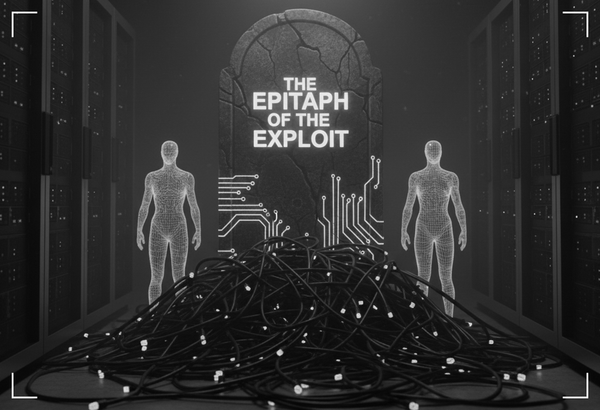The Exalted Hacker’s Waltz
Cybersecurity ignores the basics in favor of buzzwords. DNS exfiltration is a silent threat, bypassing fancy defenses. Is your network…

The cybersecurity world’s a circus these days. Vendors scream about the latest AI-powered, blockchain-infused, quantum-resistant miracle solution, all while the same old lame attacks keep on working. Amidst the noise, true elegance often goes unnoticed. Enter DNS exfiltration — a technique so smooth, it makes zero-days look like a toddler’s tantrum.
The Beauty of the Beast
Think of DNS like the internet’s phonebook. Boring, essential, and usually ignored unless something’s seriously broken. That’s the beauty of DNS exfiltration. It takes this mundane service and turns it into a phantom courier, leaving those lumbering, overhyped security tools fumbling in the dark.
- Subdomains as Secret Containers: Your average website has a few subdomains, maybe “mail,” “blog,” the usual stuff. But an attacker? They’ll tack on chunks of your stolen data disguised as subdomains: chunk1.yourcreditcardinfo.##########.xyz. The more sensitive the loot, the longer that chain becomes.
- Encoding: The Cloak of Confusion: Attackers ain’t just gonna toss raw data into a DNS request. Encoding is their camouflage of choice. Base64 is classic, but some get creative — hex, custom concoctions meant to blend seamlessly into the background noise.
- TXT Records: The Trojan Horse: DNS isn’t just for IP addresses, it’s got TXT records too — meant for adding little notes, perfectly abusable for our shadowy purposes. Think of ’em like hollowed-out books for smuggling secrets, sitting unnoticed on the virtual bookshelf.
The Not-So-Subtle Signs (If You’re Paying Attention)
DNS exfiltration might be elegant, but it’s not foolproof. Here’s where those overpriced appliances might earn their keep, assuming the hamster running the wheel inside is awake:
- The Parade of Freaky Domains: No legitimate website needs subdomains 20 characters long, filled with random-looking gibberish. Spotting the absurdity goes a long way, even if you can’t crack the code itself.
- Traffic That Defies Logic: That forgotten server in the basement suddenly swamped with DNS requests? At 3 AM? Yeah, someone’s either exfiltrating data or their machine has become a very confused crypto miner.
- The Unseen Pattern: DNS traffic is always happening, but it should have a rhythm. Bursts of requests to shady domains, especially outside normal work hours… that’s when your intuition should set off more alarms than a botched bank heist.
Hot Takes to Make the Industry Squirm
- Vendors Hate This One Trick: Bet half the sales pitches you hear wouldn’t even mention DNS exfiltration. Why? Because their shiny boxes are mostly blind to it, and explaining that ain’t gonna sell subscriptions.
- Advanced Doesn’t Mean Effective: Machine learning might spot phishing emails with laser precision, but it won’t save you when your sensitive data is waltzing away, one DNS packet at a time.
- Distracted by Noise: Many incident response teams lose their minds over commodity malware, while the skilled operators quietly bleed you dry using protocols your firewall trusts more than its own firmware.
The Attacker’s Mind
To catch an exfiltration scheme, you gotta think like the adversary. Here’s why DNS tunneling makes them giddy, and the technical details they obsess over:
- Ultimate Stealth: Firewalls snooze, antivirus shrugs, and those behavior analytics tools get… well, confused. If done right, it looks darn near normal.
- Patience is Rewarded: Exfiltrating gigabytes of data this way ain’t fast, but who cares? If no one’s watching, you can take your sweet time.
- DIY Delight: Sure, you can buy exfiltration toolkits, but the true hacker spirit lies in building your own, proving your mastery over the protocol itself.
- The Encoding Dance: Base64 is the old standby, but attackers might get fancy. Custom ciphers, steganography (hiding data in plain sight!)…the goal is to confuse automated tools and exhaust human analysts.
- Controlling the Flow: Exfiltration tools often have options to throttle speed, avoiding massive spikes of unusual DNS traffic. They might even limit themselves to off-hours, further minimizing the chance of detection.
The Defender’s Dilemma
Spotting DNS exfiltration ain’t like catching a virus with a known signature. It demands a different mindset, and a focus on these technical areas:
- Know Your Norm: Understand the usual ebb and flow of DNS traffic on your network. It’s tedious, but that baseline is what lets you spot the outlier.
- Log Everything: Painful, yes. But if an exfiltration happened a week ago, you need the data to trace it back, even if you only notice it now.
- Embrace Anomaly Detection: Pattern recognition, whether through fancy tools or just your gut instinct, is key. Look for the odd bursts, the unnatural spikes… those whispers in the noise.
- Hunting with Entropy: Encoded data in DNS packets often has high entropy — a fancy way of saying “randomness.” Tools that can measure this within DNS traffic give you another clue to hunt with.
- Proactive Threat Intelligence: DNS exfiltration toolkits evolve, and new ones pop up. Tap into threat intel feeds to be aware of new domains, techniques, and telltale signs to watch for.
The Tools of the Trade
Let’s get specific. Names of common tools attackers and defenders alike might use:
- Iodine, DNScat2, Ptunnel: Classic DNS tunneling toolkits
- Custom Scripts: Python and other languages are perfect for rolling your own exfiltration tools, tailored to your target
- Wireshark: The ultimate packet analysis tool. Mastering it is key for spotting DNS exfiltration attempts.
- Splunk (or other SIEM): If you’ve got it, correlate DNS logs with other network events for a broader picture
Let’s keep in mind, the struggle between attacker and defender is a constant arms race. New techniques emerge, new detection methods follow… the thrill of the hunt is never-ending.
Originally published at https://www.cuscusaws.com on March 11, 2024.



